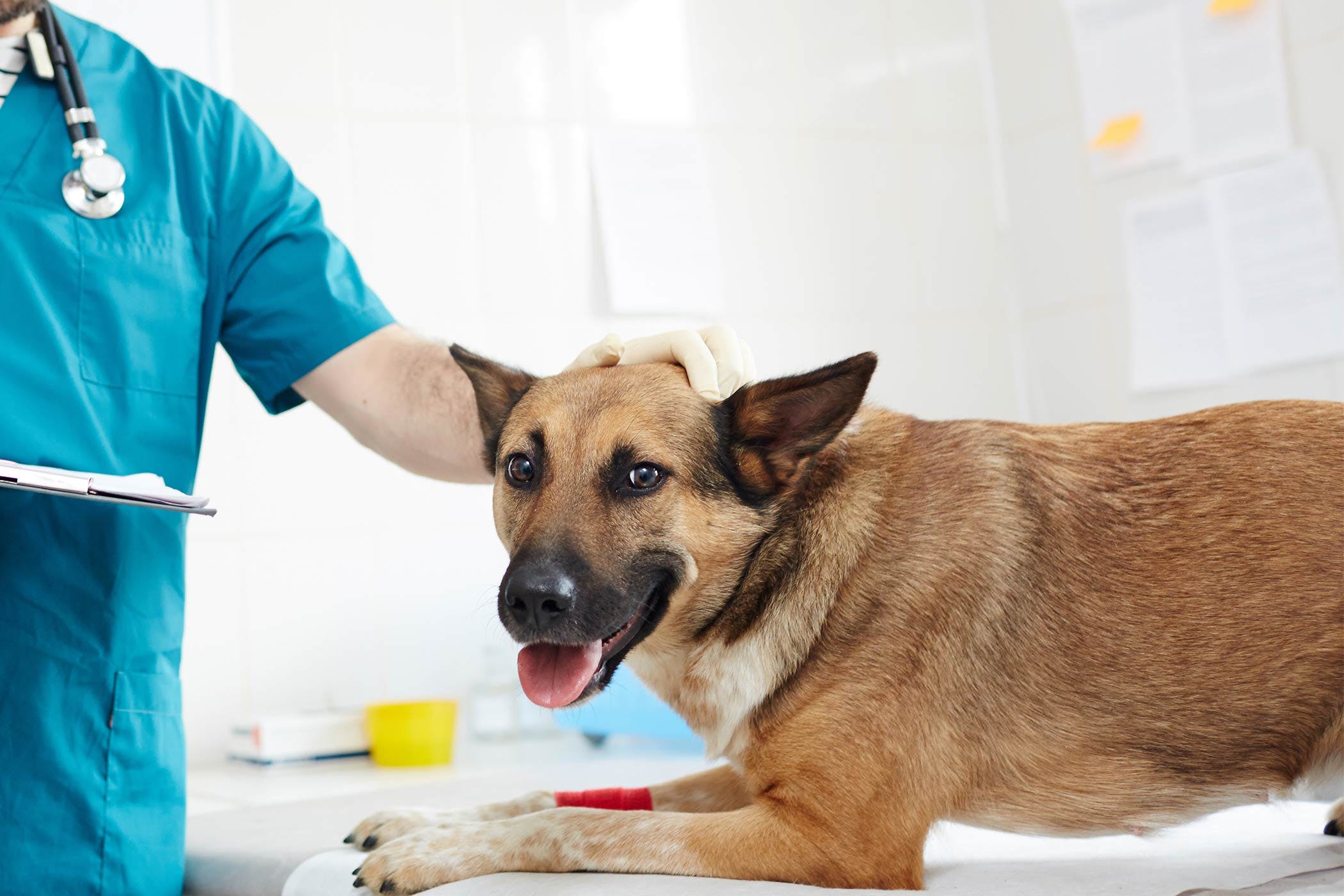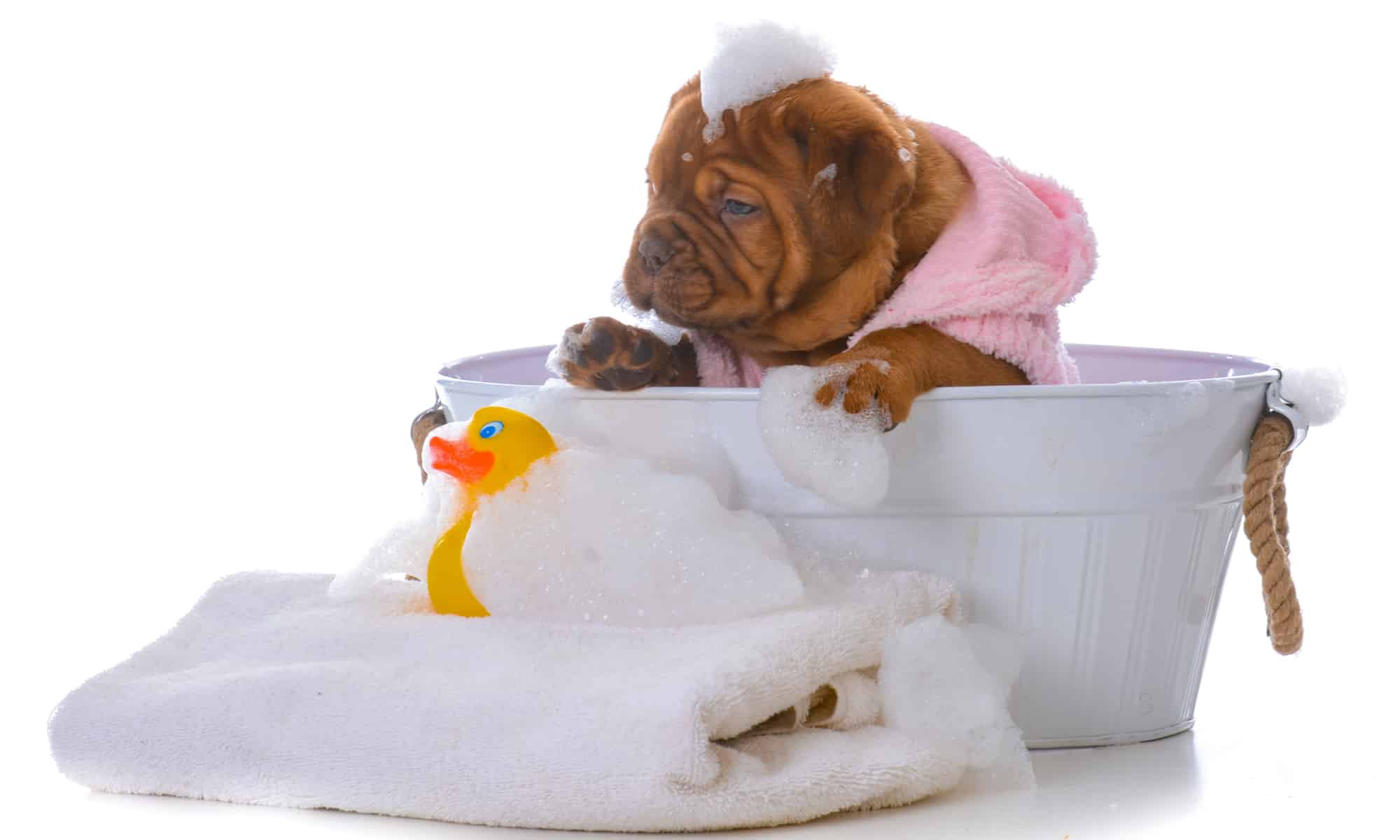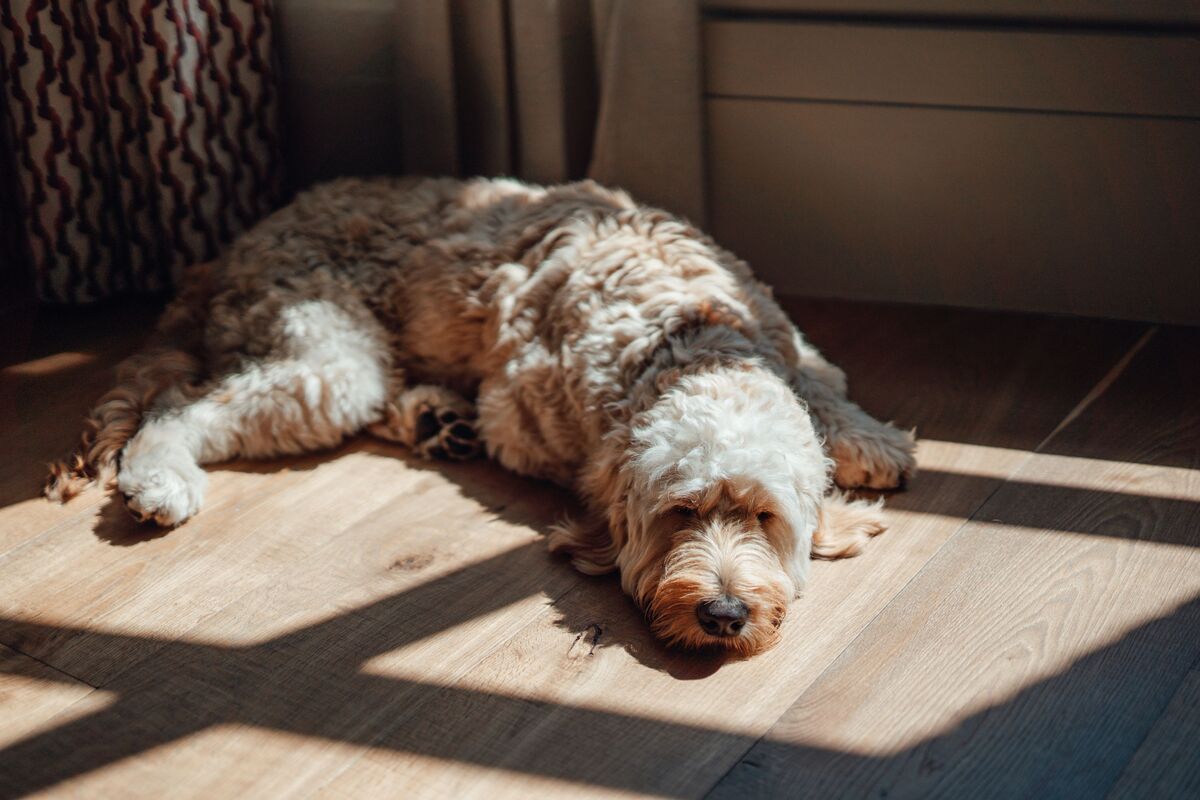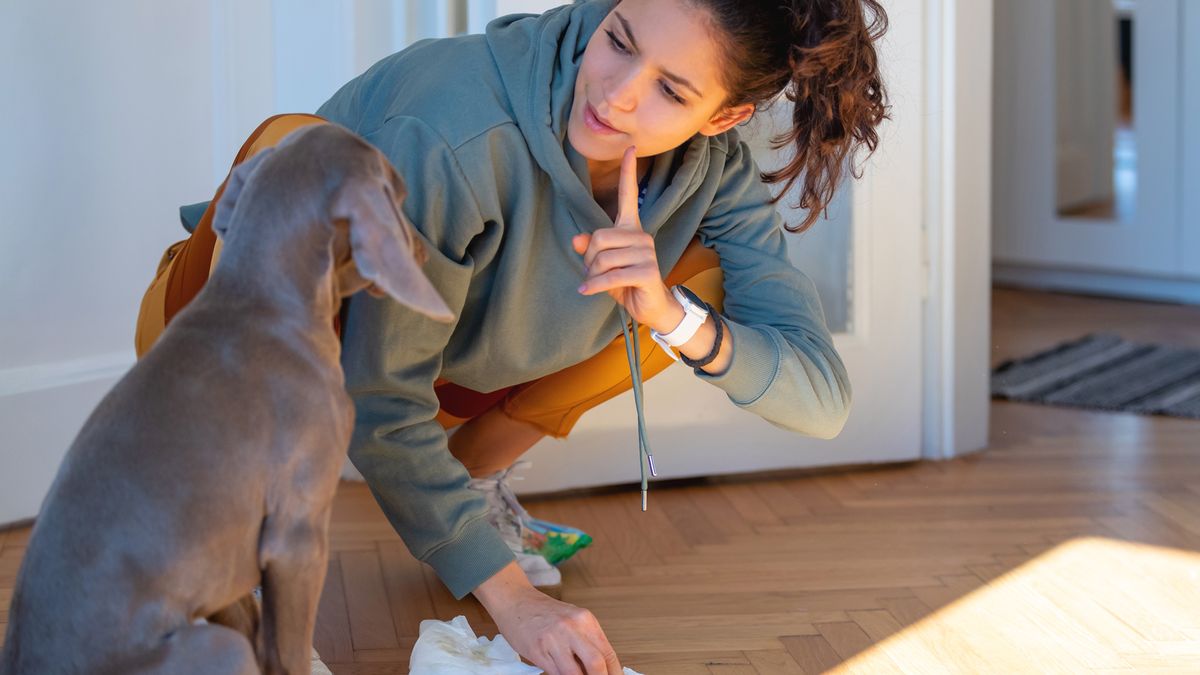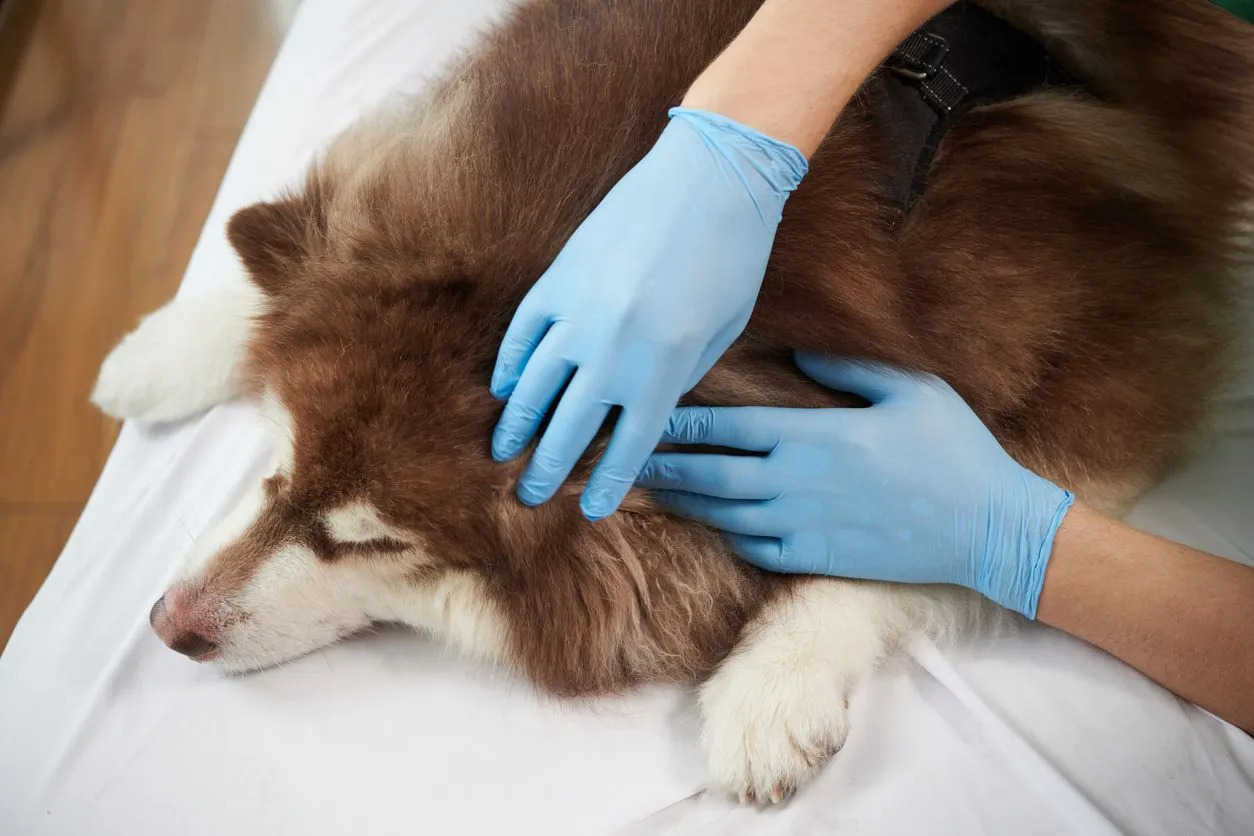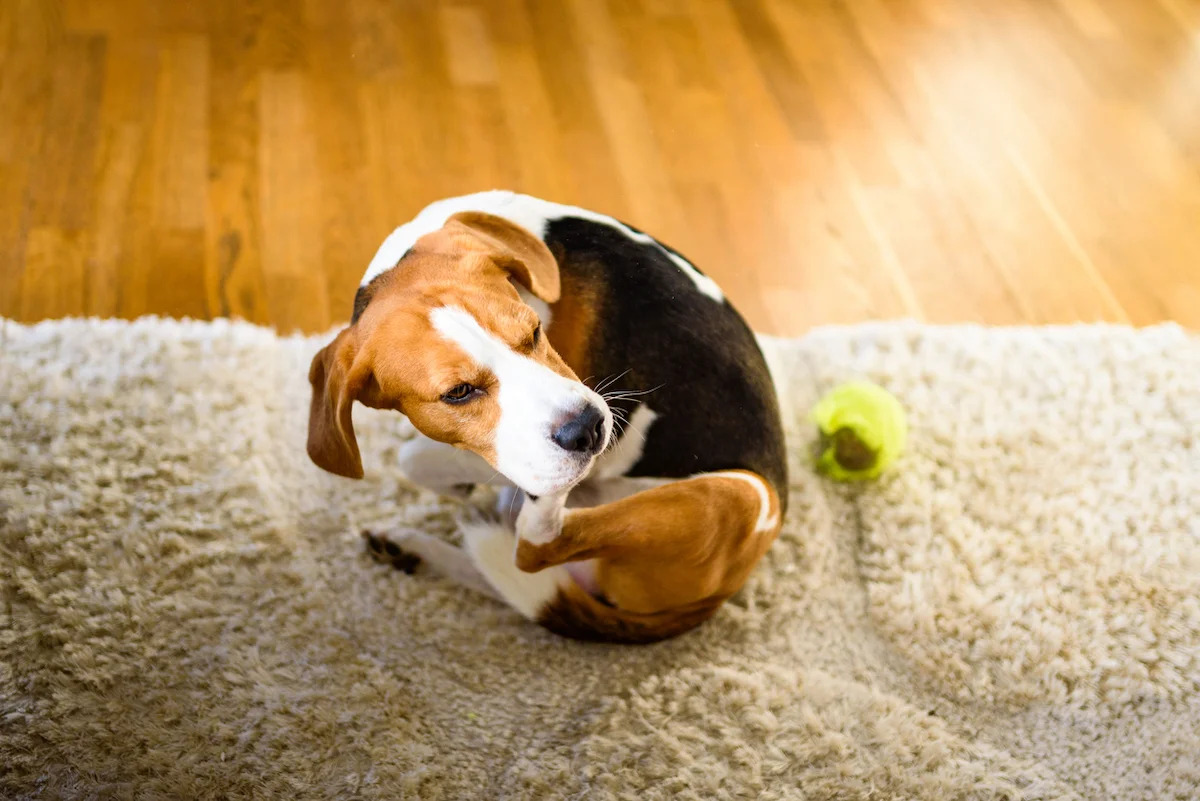Home>Health & Wellness>Common Health Issues>How To Clean Your House After Your Dog Has Fleas
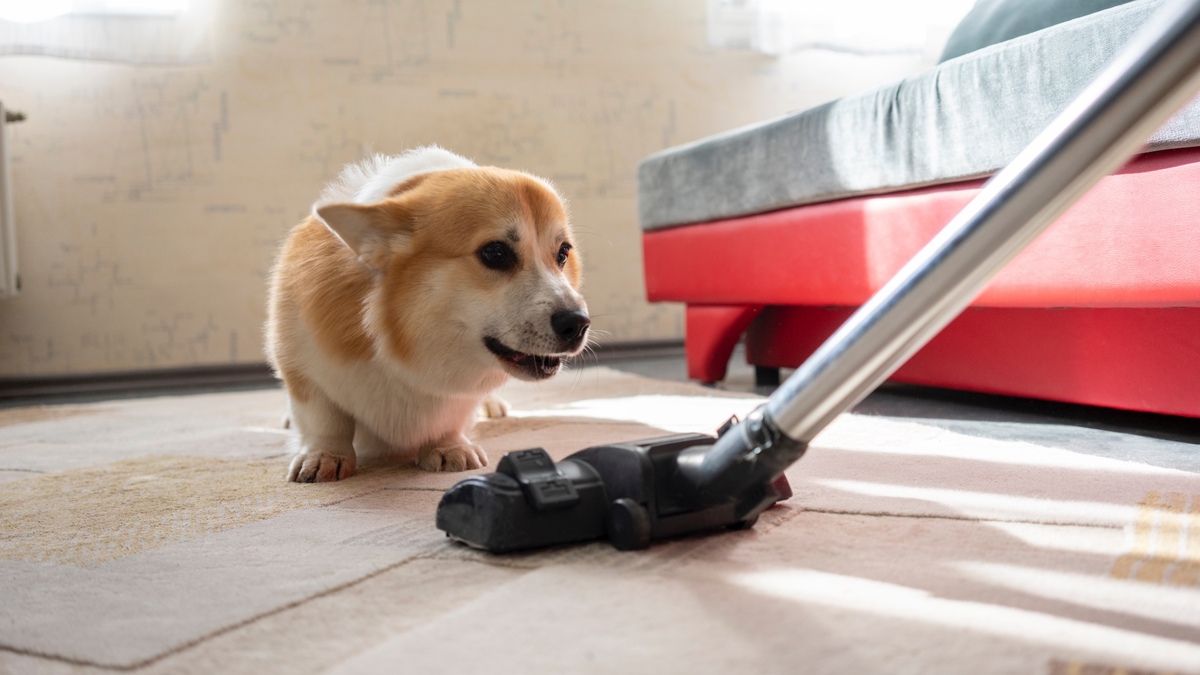

Common Health Issues
How To Clean Your House After Your Dog Has Fleas
Modified: February 21, 2024
Learn how to effectively clean your house after your dog has fleas to prevent common health issues. Follow these tips to keep your home and family safe.
(Many of the links in this article redirect to a specific reviewed product. Your purchase of these products through affiliate links helps to generate commission for Pawsomeoldies.com, at no extra cost. Learn more)
Table of Contents
Introduction
Dealing with a flea infestation in your home can be a daunting task, especially if you have a furry friend who has brought these pesky critters indoors. Fleas not only cause discomfort to your beloved pet but can also quickly spread throughout your living space, making it essential to take immediate action to eradicate them. In this comprehensive guide, we will walk you through the step-by-step process of cleaning your house after your dog has brought fleas inside. By following these effective strategies, you can ensure a flea-free environment for both your pet and your family.
Fleas are tiny, wingless insects that survive by feeding on the blood of animals and humans. They are notorious for their rapid reproduction cycle, making it crucial to address a flea infestation promptly. When your dog brings fleas into your home, these resilient pests can quickly spread to carpets, bedding, and furniture, creating a persistent nuisance. Not only do fleas cause itching and discomfort for your pet, but they can also transmit diseases and trigger allergic reactions in both animals and humans.
To effectively tackle a flea infestation, it's essential to adopt a holistic approach that encompasses both your pet and your living environment. By implementing thorough cleaning and treatment measures, you can eliminate fleas at all stages of their life cycle, from eggs to adults. Additionally, taking proactive steps to prevent future infestations is crucial for maintaining a clean and healthy home environment.
In the following steps, we will guide you through the process of thoroughly cleaning and treating your home to eradicate fleas and prevent their return. From washing bedding and linens to using flea spray and foggers, each step is designed to target fleas at different stages of their life cycle, ensuring a comprehensive approach to flea control. By following these steps diligently, you can create a comfortable and flea-free living space for both your furry companion and your family.
Now, let's embark on this journey to reclaim your home from fleas and create a safe, welcoming environment for your beloved pet and loved ones.
Step 1: Remove and wash all bedding and linens
The first crucial step in eliminating fleas from your home is to focus on areas where these persistent pests tend to thrive. Bedding and linens provide an ideal environment for fleas to lay eggs and multiply, making them a primary target for thorough cleaning and treatment.
Begin by removing all bedding, including sheets, pillowcases, blankets, and pet bedding, from the affected areas. It's important to gather all items that come in contact with your pet or are located in the vicinity of infested areas. By doing so, you can effectively contain and address the spread of fleas within your home.
Once you have gathered the bedding and linens, wash them in hot water to eradicate fleas at all stages of their life cycle. The high temperature of the water, combined with the use of laundry detergent, effectively kills fleas, larvae, and eggs, ensuring a thorough cleansing process. Additionally, consider using a pet-safe laundry detergent to prevent any potential skin irritation for your furry companion.
After washing the bedding and linens, ensure that they are completely dried using a high-heat setting in the dryer. The heat not only eliminates any remaining fleas but also helps to remove moisture, which is essential for preventing the survival and proliferation of these resilient pests.
In addition to washing your pet's bedding, it's important to clean any other fabric surfaces that may have come into contact with fleas. This includes curtains, upholstery, and any removable covers on furniture. By addressing these areas comprehensively, you can effectively disrupt the flea life cycle and prevent reinfestation.
By diligently removing and washing all bedding and linens, you can significantly reduce the flea population in your home and create a clean, comfortable environment for both your pet and your family. This proactive approach sets the foundation for comprehensive flea control, laying the groundwork for the subsequent steps in the cleaning and treatment process.
Step 2: Vacuum all surfaces
After addressing the bedding and linens, the next critical step in eliminating fleas from your home is to thoroughly vacuum all surfaces where these persistent pests may reside. Fleas and their eggs can easily find their way into carpets, rugs, upholstery, and other fabric surfaces, making regular vacuuming an essential component of flea control.
Start by vacuuming all carpeted areas in your home, paying close attention to corners, baseboards, and areas where your pet frequently rests. Fleas and their eggs tend to accumulate in these areas, making thorough vacuuming crucial for removing them effectively. Additionally, consider using a vacuum with a powerful suction and a rotating brush to dislodge and capture fleas from deep within the carpet fibers.
In addition to carpets, focus on vacuuming upholstered furniture, including sofas, chairs, and pet beds. Fleas can easily hide in the folds and crevices of upholstery, making it essential to vacuum these surfaces meticulously. Be sure to remove and vacuum any removable cushions and thoroughly clean the areas beneath them.
When vacuuming, it's important to be thorough and methodical, covering all areas where fleas may be present. After completing the initial vacuuming, empty the vacuum bag or canister into a plastic bag, seal it tightly, and dispose of it in an outdoor trash receptacle. This prevents any captured fleas from re-infesting your home.
To further enhance the effectiveness of vacuuming, consider using a flea collar or a flea comb on your pet before and after vacuuming. This helps to capture any fleas that may be present on your pet's fur, preventing them from escaping and re-infesting the environment.
By diligently vacuuming all surfaces in your home, you can significantly reduce the flea population and remove eggs and larvae, disrupting the flea life cycle. This proactive approach, combined with the previous step of washing bedding and linens, forms a comprehensive strategy for eradicating fleas from your living space.
Regular vacuuming, when combined with other flea control measures, plays a crucial role in preventing future infestations and maintaining a clean, flea-free environment for both your pet and your family. By incorporating thorough vacuuming into your cleaning routine, you can effectively combat fleas and create a comfortable, pest-free home.
Step 3: Wash and disinfect all hard surfaces
After addressing bedding, linens, and vacuuming fabric surfaces, it's essential to focus on washing and disinfecting all hard surfaces in your home to eliminate any remaining fleas and prevent reinfestation. Hard surfaces such as floors, countertops, and baseboards can harbor flea eggs, larvae, and pupae, making thorough cleaning and disinfection crucial for comprehensive flea control.
Begin by clearing the targeted areas of any objects, furniture, or items that may obstruct the cleaning process. This allows for unobstructed access to the surfaces and ensures that no area goes overlooked during the cleaning and disinfection process.
Next, use a high-quality pet-safe cleaner or a solution of warm water and mild detergent to wash the hard surfaces thoroughly. Pay close attention to areas where your pet frequently spends time, as well as spaces near entry points and areas with high foot traffic. These areas are more likely to harbor fleas and their eggs, making meticulous cleaning essential for effective flea control.
After washing the surfaces, it's important to disinfect them to eliminate any remaining fleas, larvae, or eggs. Consider using a pet-safe disinfectant or a solution of equal parts water and white vinegar to disinfect the cleaned surfaces. White vinegar not only serves as a natural disinfectant but also helps to repel fleas and deter their return to the treated areas.
In addition to floors and countertops, pay special attention to baseboards, moldings, and areas near pet feeding and resting areas. Fleas and their eggs can easily accumulate in these areas, making thorough cleaning and disinfection essential for eradicating them effectively.
After washing and disinfecting the hard surfaces, ensure that they are completely dry before allowing your pet or family members to come into contact with them. Proper drying helps to remove any remaining moisture, preventing the survival and proliferation of fleas in the treated areas.
By diligently washing and disinfecting all hard surfaces in your home, you can effectively eliminate any remaining fleas and disrupt their life cycle. This proactive approach, when combined with the previous steps, forms a comprehensive strategy for eradicating fleas from your living space and creating a clean, comfortable environment for both your pet and your family.
Regular cleaning and disinfection of hard surfaces play a crucial role in preventing future flea infestations and maintaining a clean, flea-free environment. By incorporating thorough cleaning and disinfection into your routine, you can effectively combat fleas and create a comfortable, pest-free home.
Step 4: Treat your dog for fleas
Treating your dog for fleas is a crucial step in eradicating these persistent pests from your home and preventing reinfestation. Fleas not only cause discomfort and irritation to your pet but can also pose health risks and lead to skin allergies. By prioritizing your pet's well-being and incorporating effective flea treatment, you can ensure a comprehensive approach to flea control.
Begin by consulting your veterinarian to determine the most suitable flea treatment for your dog. There are various options available, including topical treatments, oral medications, flea collars, and shampoos specifically formulated to eliminate fleas. Your veterinarian can provide valuable guidance on selecting the most effective and safe treatment based on your pet's age, size, and overall health.
Once you have obtained the recommended flea treatment, carefully follow the instructions provided by your veterinarian or the product manufacturer. Apply the treatment as directed, ensuring thorough coverage and adherence to the specified application frequency. It's essential to administer the treatment consistently and according to the prescribed schedule to achieve optimal results.
In addition to treating your dog with flea-specific products, consider incorporating preventive measures to minimize the risk of future infestations. Regular grooming, including brushing and combing your pet's fur, can help detect and remove fleas before they have a chance to multiply. Furthermore, maintaining a clean living environment and implementing flea control measures in and around your home can contribute to long-term flea prevention.
By prioritizing your dog's flea treatment and incorporating preventive measures, you can effectively address the source of the infestation and create a comfortable, flea-free environment for your pet and your family. Treating your dog for fleas not only promotes their well-being but also plays a pivotal role in comprehensive flea control, ensuring a harmonious and pest-free living space.
Incorporating regular flea treatment and preventive measures into your pet care routine is essential for maintaining a healthy and flea-free environment. By prioritizing your pet's well-being and taking proactive steps to address flea infestations, you can create a safe and comfortable living space for both your furry companion and your family.
Read more: If Your House Is Infested With Fleas On Two Dogs, How Long Does It Take For Capstar To Work?
Step 5: Use flea spray or fogger in your home
After addressing the primary areas of infestation and treating your pet for fleas, the next crucial step in eradicating fleas from your home is to utilize flea spray or a fogger to target remaining pests and prevent reinfestation. Flea sprays and foggers are effective tools for reaching hidden and inaccessible areas where fleas may reside, providing comprehensive coverage to eliminate these persistent pests.
When selecting a flea spray or fogger, it's essential to choose a product specifically formulated for indoor flea control. Look for options that target fleas at all stages of their life cycle, including eggs, larvae, and adult fleas. Additionally, consider products that contain insect growth regulators (IGRs) to disrupt the flea life cycle and prevent the development of new generations of fleas.
Before using flea spray or a fogger, carefully read and follow the instructions provided by the product manufacturer. Prepare the targeted areas by removing any items that may obstruct the application, such as pet food and water dishes, children's toys, and exposed food. Ensure that all occupants, including pets, vacate the treated areas as directed, and ventilate the space according to the product guidelines.
When using flea spray, apply the product thoroughly to all surfaces where fleas may be present, including carpets, rugs, upholstery, and pet bedding. Pay close attention to areas where your pet frequently rests and areas with high flea activity. Flea foggers, also known as flea bombs, are designed to release a fine mist that penetrates cracks, crevices, and other hidden spaces, effectively reaching fleas in inaccessible areas.
After applying flea spray or using a fogger, allow sufficient time for the product to take effect before re-entering the treated areas. Once the recommended exposure period has elapsed, ventilate the space thoroughly to remove any residual fumes or odors. It's essential to adhere to the safety precautions and re-entry guidelines specified by the product manufacturer to ensure the well-being of your family and pets.
In addition to treating indoor spaces, consider using flea spray or fogger in areas such as garages, basements, and pet enclosures, where fleas may find refuge. By targeting these areas comprehensively, you can disrupt the flea life cycle and prevent reinfestation, creating a clean and pest-free environment for both your pet and your family.
By incorporating flea spray or a fogger into your flea control strategy, you can effectively target remaining fleas and prevent their return. These products provide a valuable layer of defense against persistent pests, contributing to a comprehensive approach to flea control and creating a comfortable, flea-free living space for your beloved pet and your family.
Step 6: Repeat the process regularly to prevent future infestations
Consistency is key when it comes to preventing future flea infestations in your home. After diligently cleaning, treating your pet, and using flea control products, it's essential to establish a routine for ongoing maintenance to safeguard your living environment against potential reinfestations.
Regular vacuuming is a fundamental practice that should be integrated into your cleaning regimen. By vacuuming carpets, rugs, and upholstered furniture on a weekly basis, you can effectively capture any stray fleas, eggs, or larvae that may have found their way into your home. Pay special attention to areas where your pet spends time, as well as high-traffic zones where fleas are more likely to accumulate.
In addition to vacuuming, washing your pet's bedding and linens at regular intervals is crucial for maintaining a clean and flea-free environment. Consider establishing a schedule for laundering these items, ensuring that they are washed in hot water and thoroughly dried to eliminate any potential flea infestations.
Furthermore, incorporating preventive measures such as using flea collars, topical treatments, or oral medications for your pet can serve as a proactive defense against fleas. Consult with your veterinarian to determine the most suitable preventive products for your pet's specific needs and adhere to the recommended application schedule.
Regularly inspecting your pet for signs of fleas and promptly addressing any potential infestations is essential for early intervention. By routinely grooming and combing your pet's fur, you can detect and remove fleas before they have a chance to multiply, minimizing the risk of a full-blown infestation.
Lastly, consider reapplying flea control products, such as sprays or foggers, according to the recommended schedule to maintain a protective barrier against fleas in your home. These products can help prevent the resurgence of fleas and ensure that your living environment remains pest-free.
By incorporating these proactive measures into your regular maintenance routine, you can effectively prevent future flea infestations and create a clean, comfortable living space for both your pet and your family. Consistent and thorough maintenance is the cornerstone of long-term flea control, safeguarding your home against potential infestations and promoting a harmonious environment for all occupants.
Conclusion
In conclusion, addressing a flea infestation in your home after your dog has brought these persistent pests indoors requires a comprehensive and proactive approach. By following the step-by-step process outlined in this guide, you can effectively eliminate fleas from your living environment and create a clean, comfortable space for both your pet and your family.
The journey to reclaiming your home from fleas begins with the meticulous removal and washing of all bedding and linens. This initial step sets the foundation for comprehensive flea control, targeting areas where fleas are likely to lay eggs and multiply. Thorough vacuuming of all surfaces, including carpets, rugs, and upholstery, serves as the next crucial step, capturing fleas and their eggs to disrupt their life cycle.
Washing and disinfecting all hard surfaces in your home further contributes to flea eradication, ensuring that no area goes overlooked in the cleaning process. Treating your dog for fleas is a pivotal step in addressing the source of the infestation, promoting your pet's well-being, and preventing reinfestation. Additionally, utilizing flea spray or a fogger provides a valuable layer of defense against remaining pests, targeting hidden and inaccessible areas where fleas may reside.
Consistency is key in preventing future flea infestations, and establishing a routine for ongoing maintenance is essential. Regular vacuuming, washing pet bedding, incorporating preventive measures for your pet, and routinely inspecting for signs of fleas are fundamental practices that contribute to long-term flea control. By repeating the process regularly and adhering to preventive measures, you can maintain a clean, flea-free living space for your beloved pet and your family.
In essence, the journey to clean your house after your dog has brought fleas inside is a proactive and ongoing commitment to creating a harmonious and pest-free environment. By diligently following the steps outlined in this guide and incorporating preventive measures into your routine, you can effectively combat fleas and ensure a comfortable living space for all occupants. Embracing a holistic approach to flea control not only safeguards your home against infestations but also promotes the well-being of your furry companion, fostering a healthy and thriving environment for everyone to enjoy.
